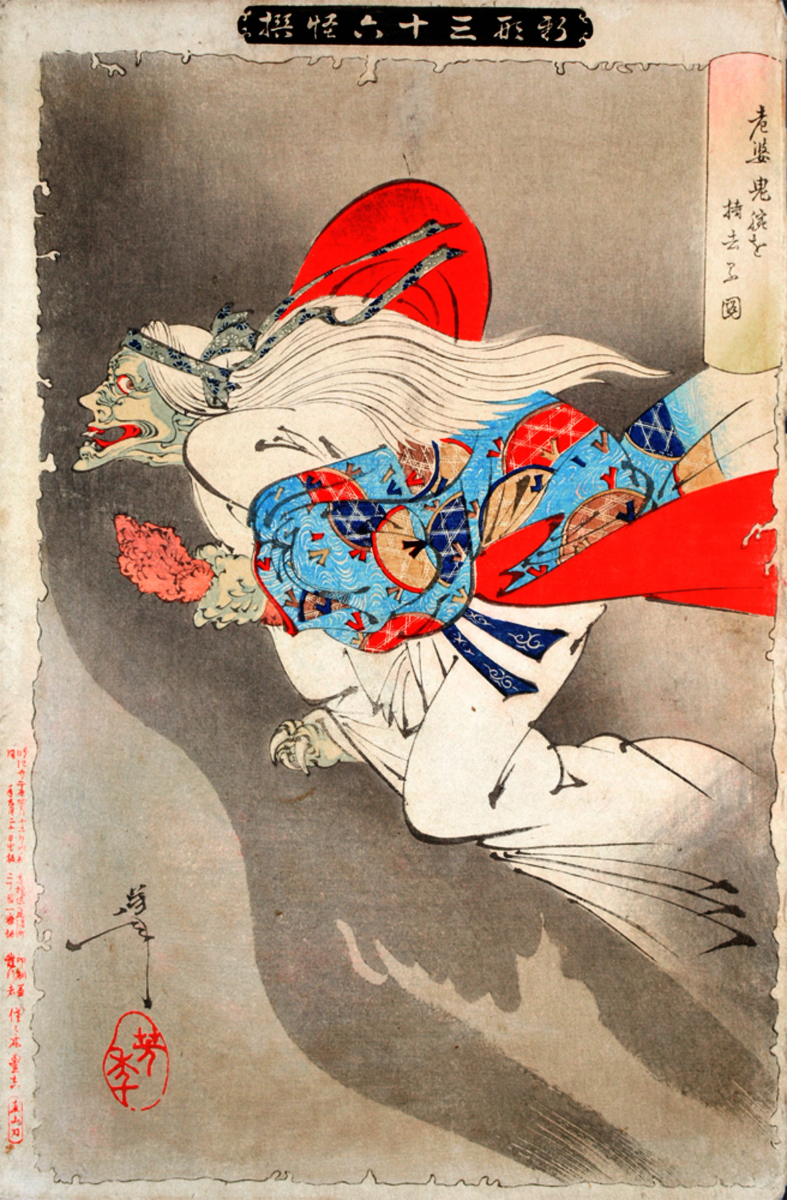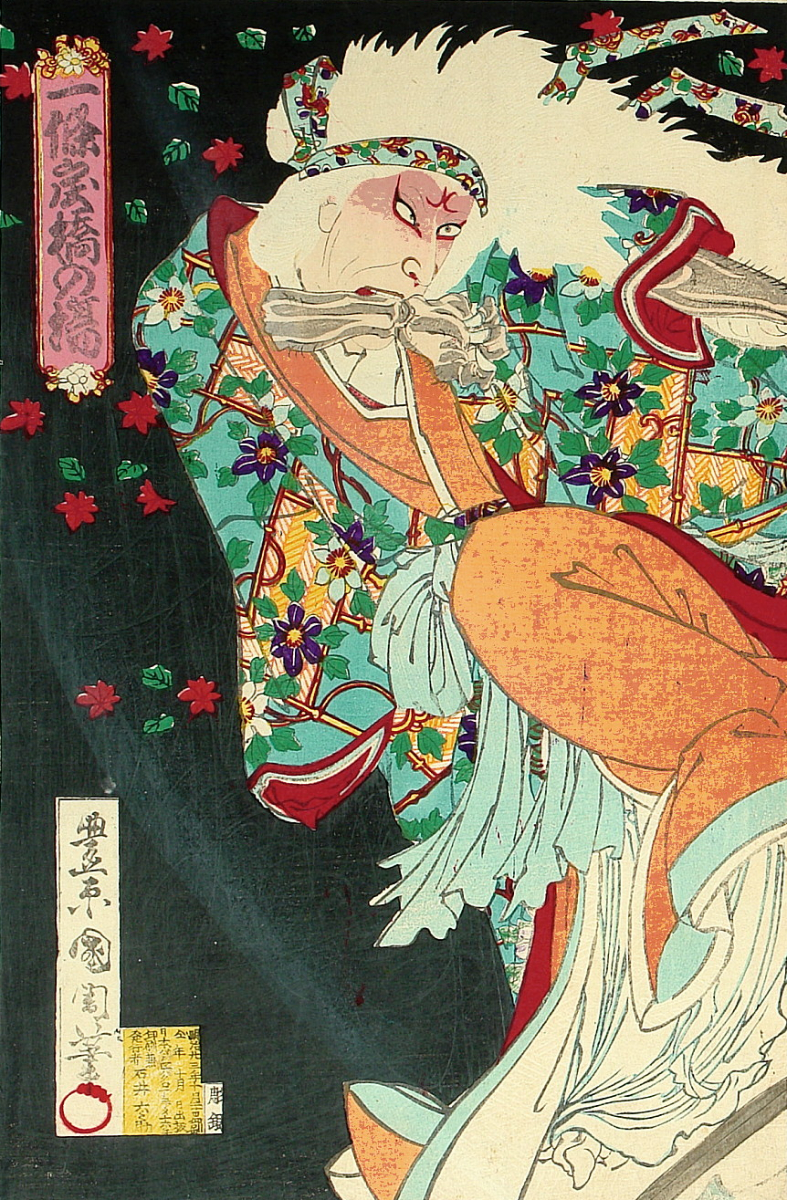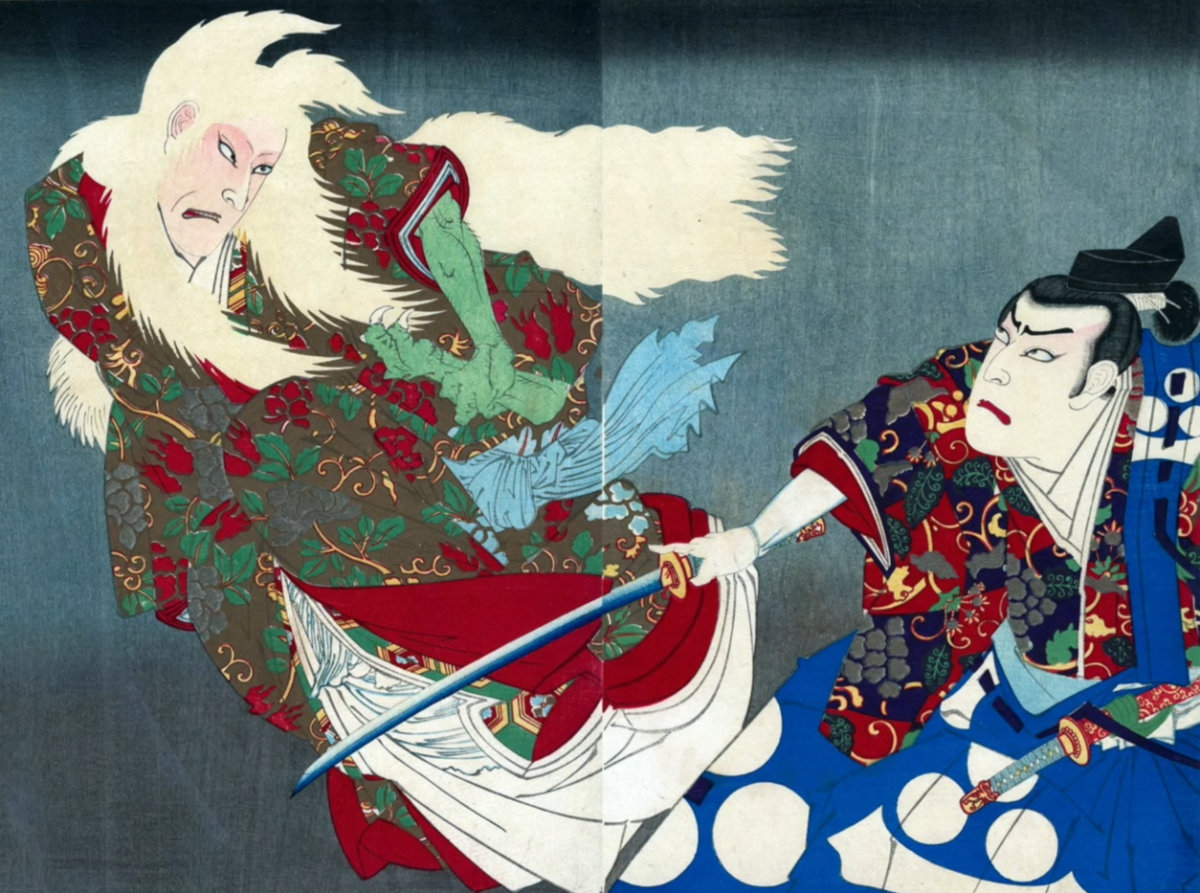Ibaraki-dōji is an oni (demon or ogre) featured in tales of the Heian period. In the tales, Ibaraki-dōji is based on Mount Ōe, and once went on a rampage in Kyoto. The “Ibaraki” in his name may refer to Ibaraki, Osaka; “dōji” means “child”, but in this context is a demon offspring. Ibaraki-dōji was the most important servant of Shuten-dōji. Ibaraki-dōji had teeth since birth, and was feared for being a giant. After they became an oni, they met Shuten-dōji and became his subordinate, and together they aimed for the capital. Their gender is ambiguous, in some stories Ibaraki is a kijo (female oni), and in others a male. The female version is theorized to be Shuten-dōji’s lover, son, or his son’s lover. The Shuten-dōji gang was based on Mt. Ōe. The gang ran amok in the capital, kidnapping families’ girls among other things, but they were destroyed by Minamoto no Yorimitsu and his four vassals, the Four Guardian Kings. However, Ibaraki-dōji was able to escape. According to the legend, Watanabe no Tsuna cut Ibaraki Doji’s arm with a tachi named “Higekiri”. At present, Kitano Tenmangū Shrine owns a tachi “Onikirimaru” (鬼切丸) handed down as “Higekiri”, which is also called “Onikiri”, “Onimaru”, “Shishinoko” or “Tomokiri” based on various legends.
| Alias Ibaraki-dōji (茨木童子 or 茨城童子) |
| Real Names/Alt Names “Ibaraki child” |
| Characteristics Villain, Myths & Legends, Yokai, Medieval Age, Japanese |
| Creators/Key Contributors Tsukioka Yoshitoshi, ○ |
| First Appearance Japanese folklore |
| First Publisher ○ |
| Appearance List Literature: Genpei Jōsuiki (Genpei Seisuiki, 源平盛衰記, 13th or 14th century), Taiheiki (太平記, 1338-1394), The Tale of the Heike: Tsurugi no Maki (平家物語, Heike Monogatari, 1240), Zentaiheiki, Otogi-zōshi (御伽草子, 1392–1573). Plays: Ibaraki (茨木, Kabuki, 1883), Modori-hashi (戻橋, Kabuki, 1897), Rashōmon (Noh play, 羅生門, c. 1420), Tsunayakata (綱館, Nagauta, 1869). |
| Sample Read Tale of the Heike (Heike monogatari) [Internet Archive] |
| Description Ibaraki-dōji is an oni (demon or ogre) featured in tales of the Heian period. In the tales, Ibaraki-dōji is based on Mount Ōe, and once went on a rampage in Kyoto. The “Ibaraki” in his name may refer to Ibaraki, Osaka; “dōji” means “child”, but in this context is a demon offspring. Ibaraki-dōji was the most important servant of Shuten-dōji. Ibaraki-dōji had teeth since birth, and was feared for being a giant. After they became an oni, they met Shuten-dōji and became his subordinate, and together they aimed for the capital. Their gender is ambiguous, in some stories Ibaraki is a kijo (female oni), and in others a male. The female version is theorized to be Shuten-dōji’s lover, son, or his son’s lover. The Shuten-dōji gang was based on Mt. Ōe. The gang ran amok in the capital, kidnapping families’ girls among other things, but they were destroyed by Minamoto no Yorimitsu and his four vassals, the Four Guardian Kings. However, Ibaraki-dōji was able to escape. According to the legend, Watanabe no Tsuna cut Ibaraki Doji’s arm with a tachi named “Higekiri”. At present, Kitano Tenmangū Shrine owns a tachi “Onikirimaru” (鬼切丸) handed down as “Higekiri”, which is also called “Onikiri”, “Onimaru”, “Shishinoko” or “Tomokiri” based on various legends. |
| Source Ibaraki-doji – Wikipedia |




